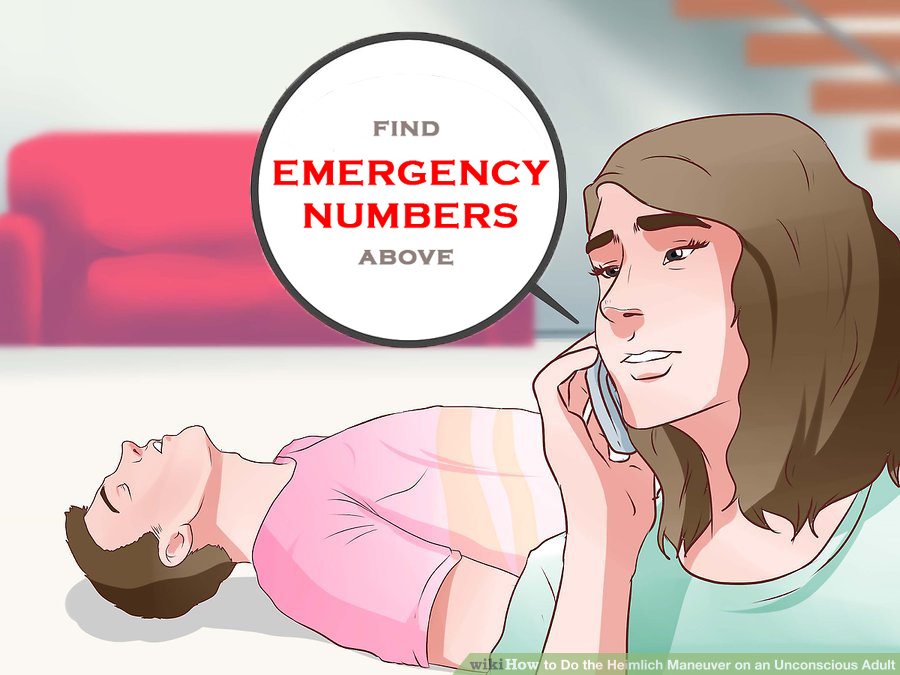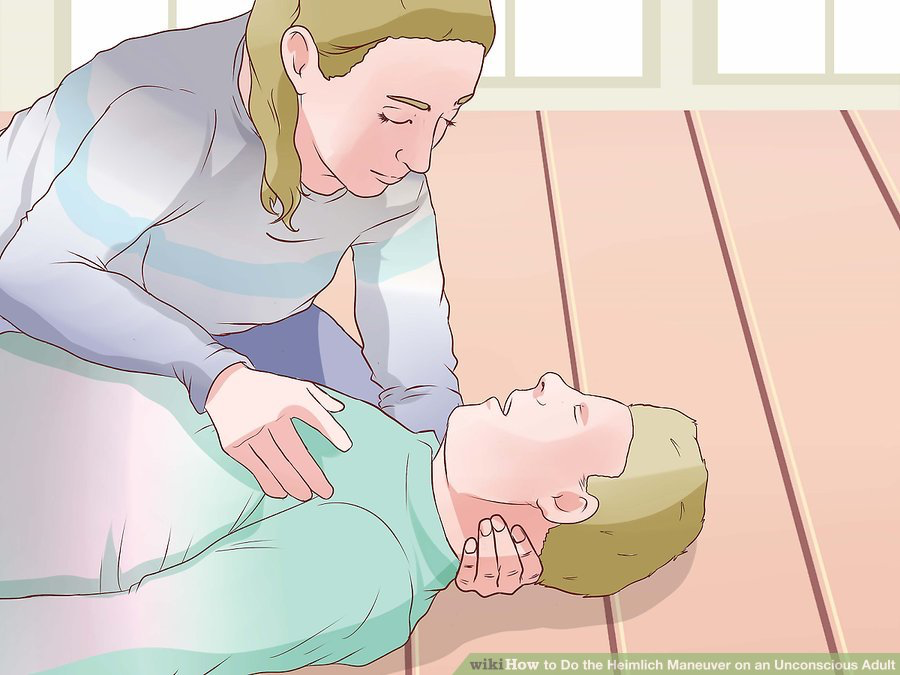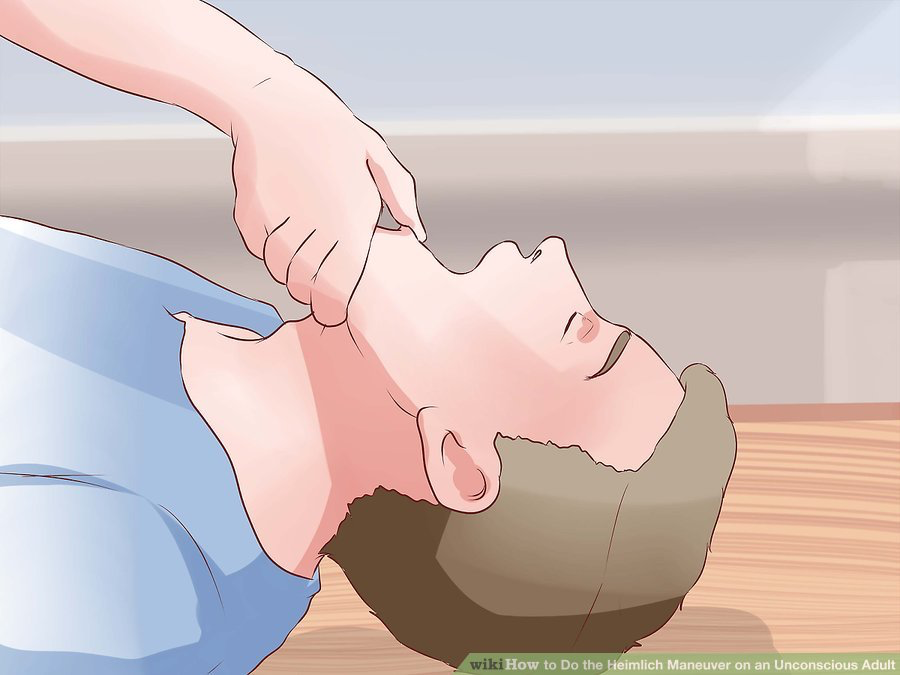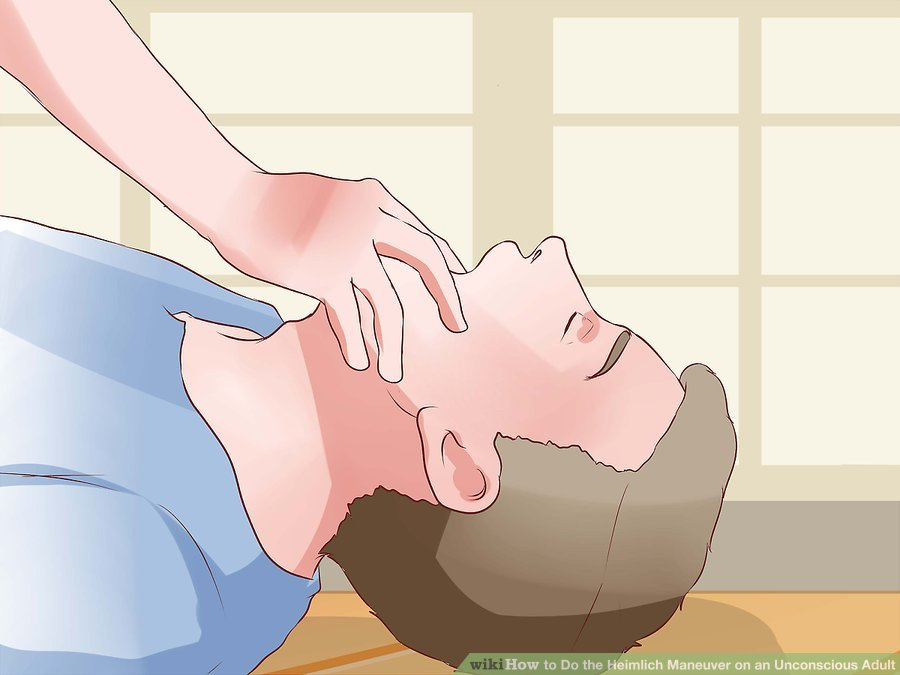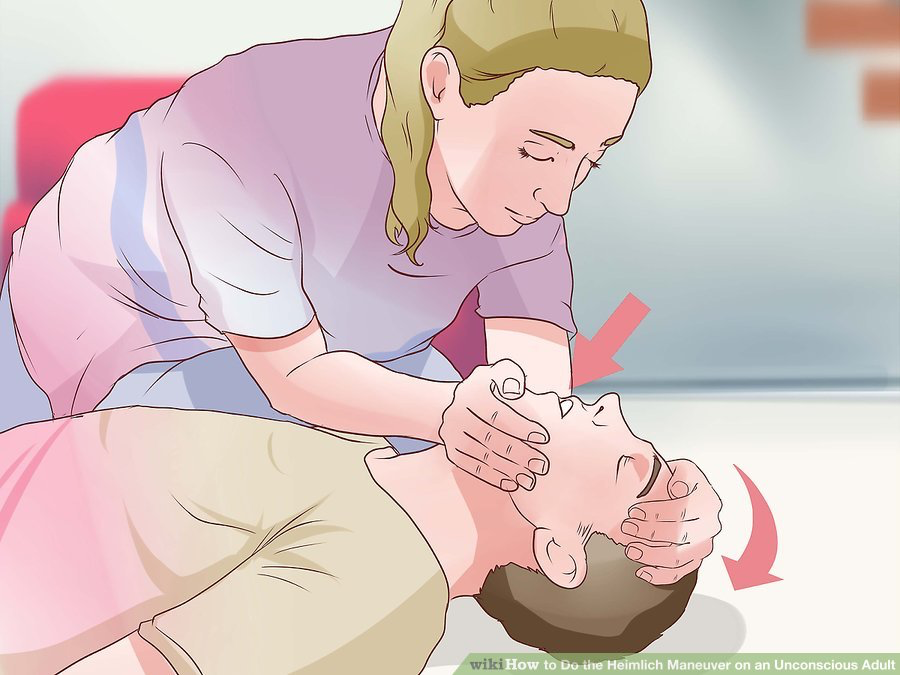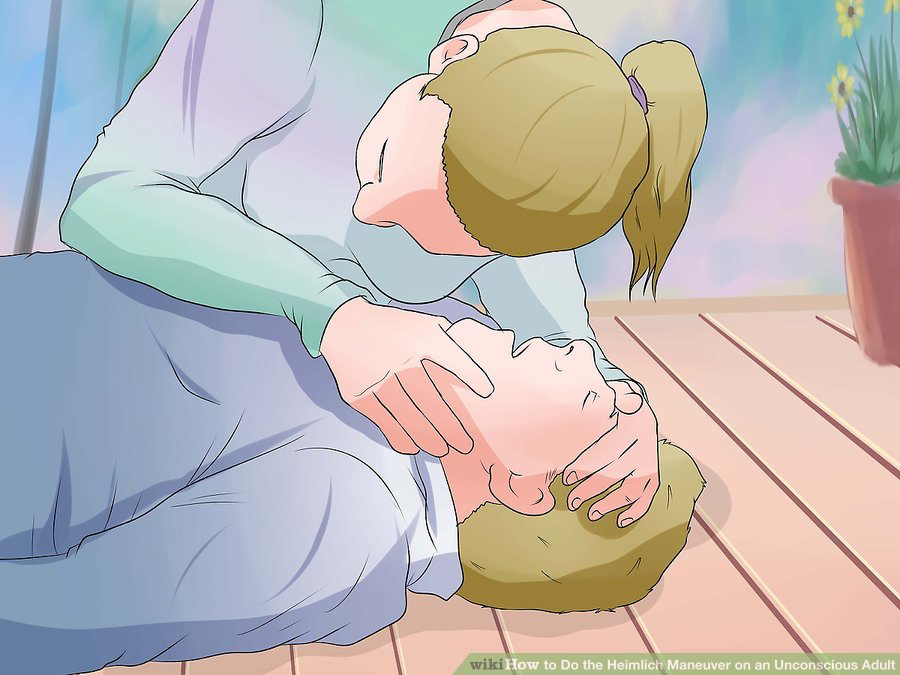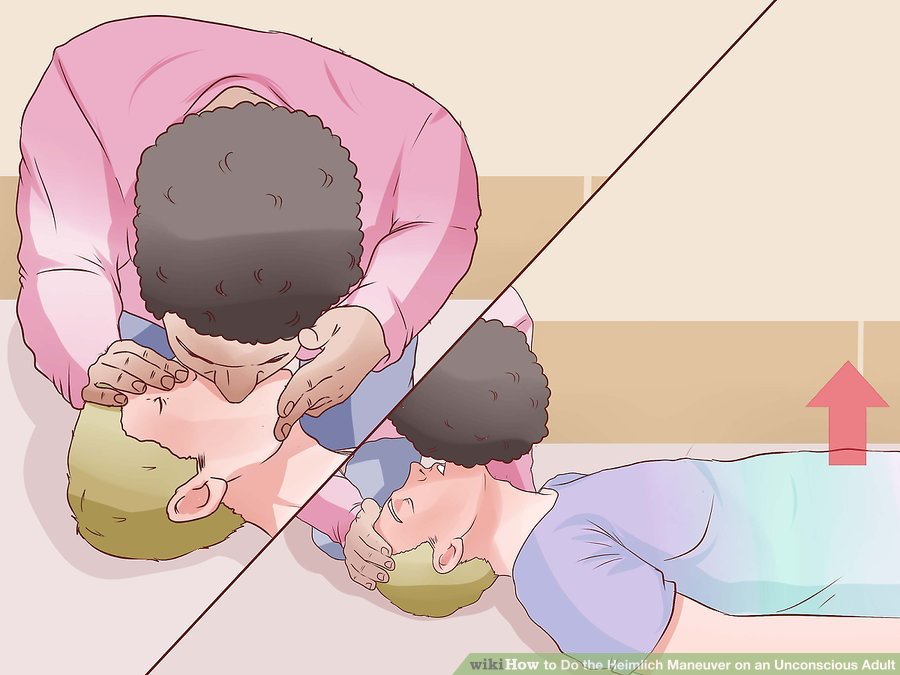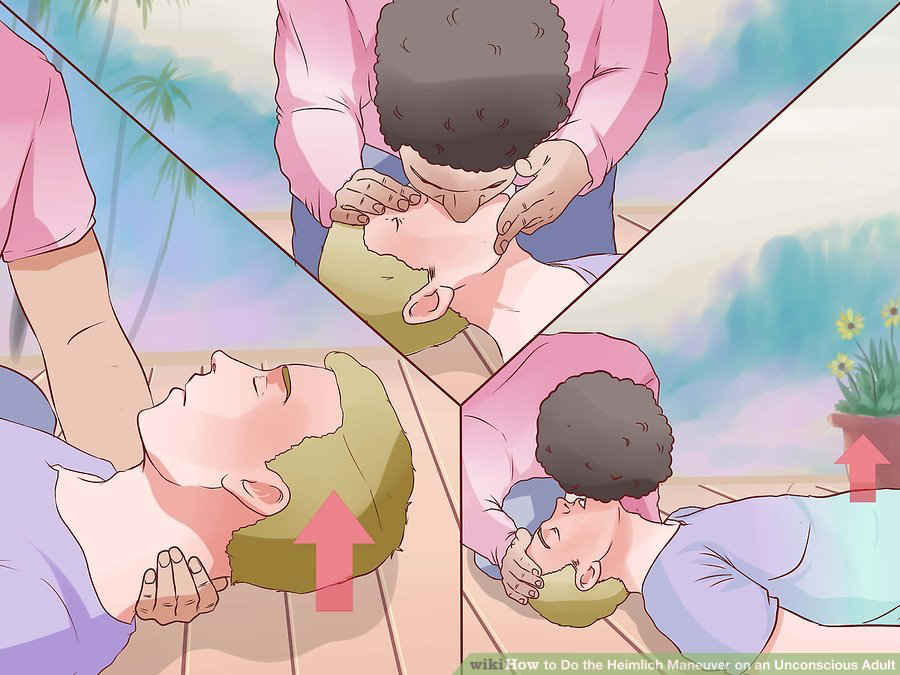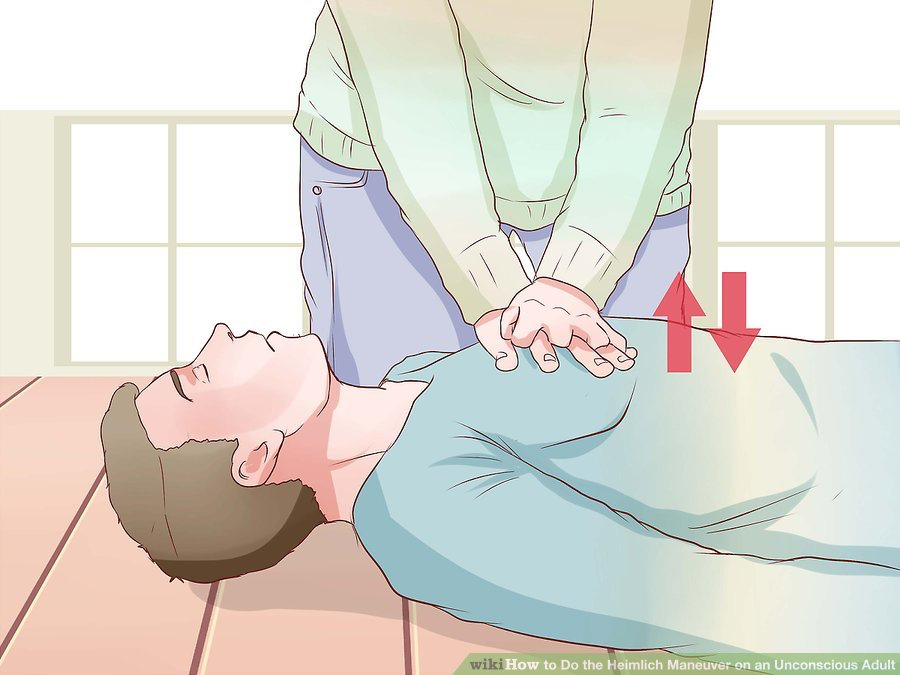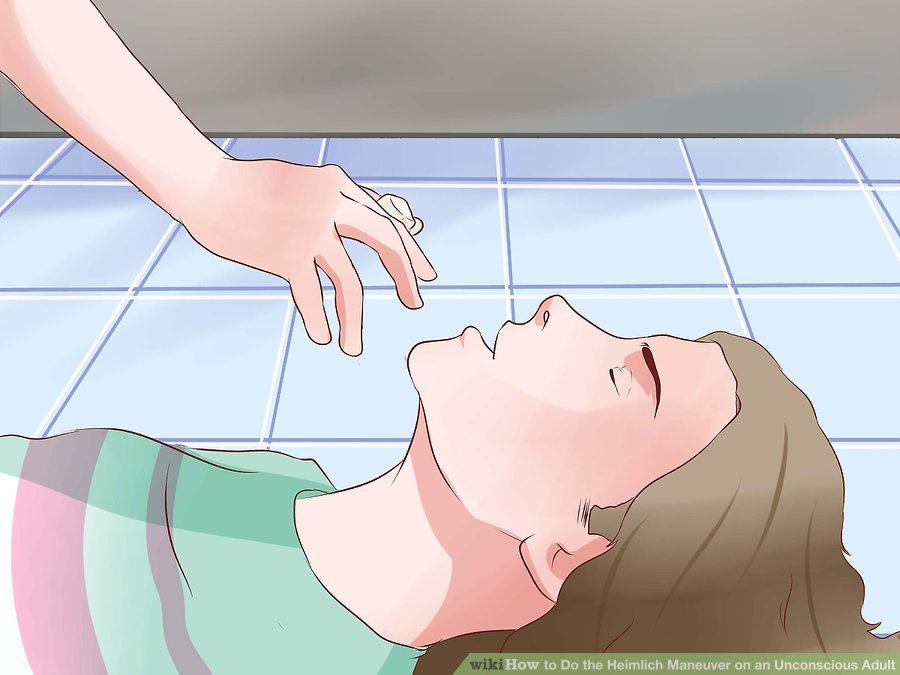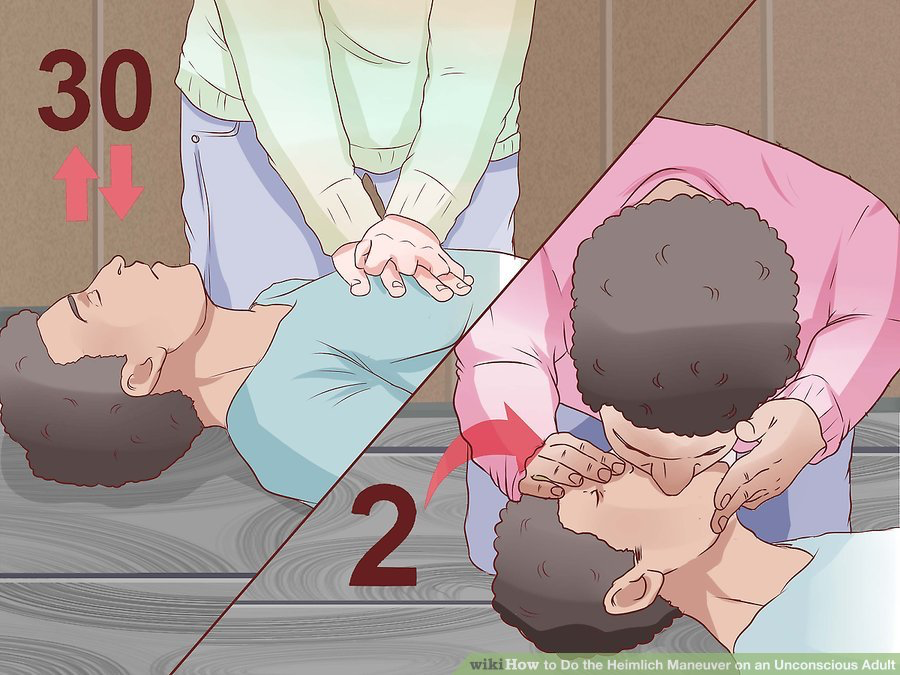Back First Aid Explained
How to Do the Heimlich Maneuver on an Unconscious Adult
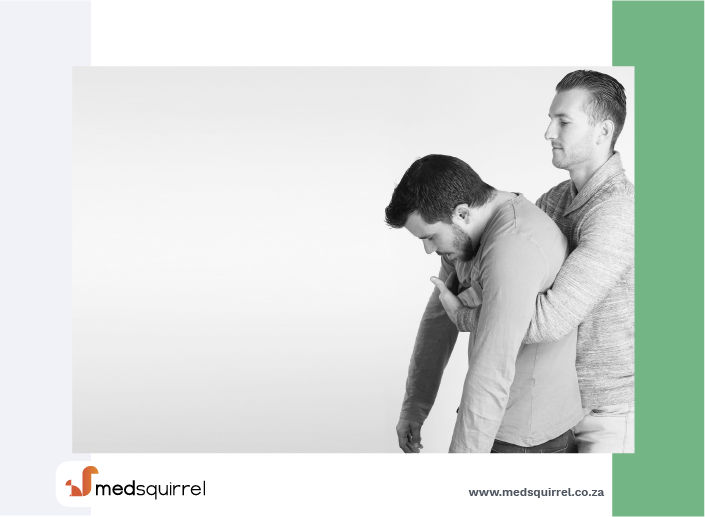
We have selected the following expert medical opinion based on its clarity, reliability and accuracy. Credits: Sourced from the website wikiHow. Please refer to your own medical practitioner for a final perspective, assessment or evaluation.
Overview
Seeing someone choke on food or other small objects can be a frightening experience. Knowing how to help a person who is choking can save his or her life. Performing the true Heimlich maneuver (forming a fist above the navel and thrusting up) is only done with conscious victims. Although still considered the Heimlich maneuver, the procedure for an unconscious person is actually more similar to CPR.
Part 1: Adult
1. Seek medical assistance (see "EMERGENCY NUMBERS" above)
Immediately ask someone to call emergency services (see "EMERGENCY NUMBERS" above) as you begin providing assistance to the unconscious person. If you are alone, shout for help as you begin the Heimlich maneuver.
2. Roll the person on her back on a hard surface
Move the person onto her back while supporting the head and neck. Place the choking person on a hard surface (such as a floor) that can support the body while you perform the maneuver.
3. Open the person's mouth
Using your thumb and an index finger, open the choking person's mouth. Position your thumb on top of the person's tongue and your other finger under the chin.
4. Look into the victim's mouth
If you can see an object and it is loose, remove it from the person's mouth. With the person's head turned to the side, use a finger or two to gently sweep the object out of the person's mouth. Be careful not to push the object deeper.
5. Tilt the head back if you cannot see an object
If you cannot see what is lodged in the person's mouth, tilt the head back and lift the chin. This will open the person's airway.
- Generally choking victims will not also have spinal injuries, but if the person has suspected head, neck, or spine injuries, use a jaw-thrust to open his airway, not head-tilt chin-lift.
6. Watch for evidence of breathing
- If the person is not breathing, start performing rescue breathing.
7. Give first aid for unconsciousness if the person is breathing
While waiting for emergency medical assistance to arrive, keep careful watch over the person and perform first aid as needed:
- Make sure that the person continues to breathe.
- Check the person's pulse frequently.
- If the person's breathing or pulse stops at any time, perform CPR.
- If the person's back is not injured, roll the person on her side. Bend her top leg at the knee.
- Keep the person warm while you wait for assistance.
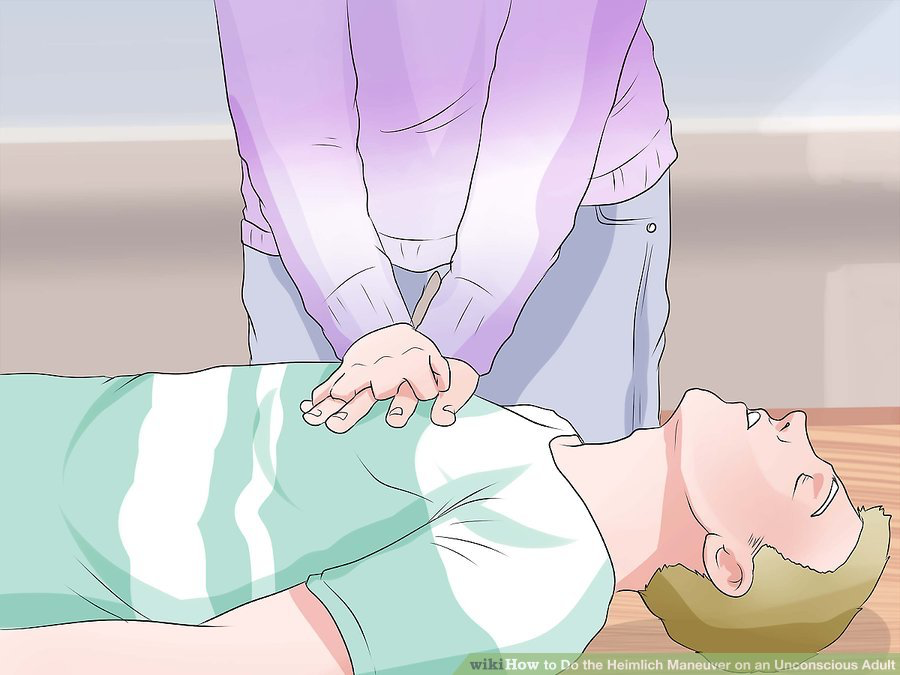
Part 2: Performing Rescue Breathing and CPR
1. Prepare for rescue breathing
Keep the person's head tilted back. Pinch the person's nostrils closed, using your thumb and forefinger. Cover the person's mouth tightly with your mouth.
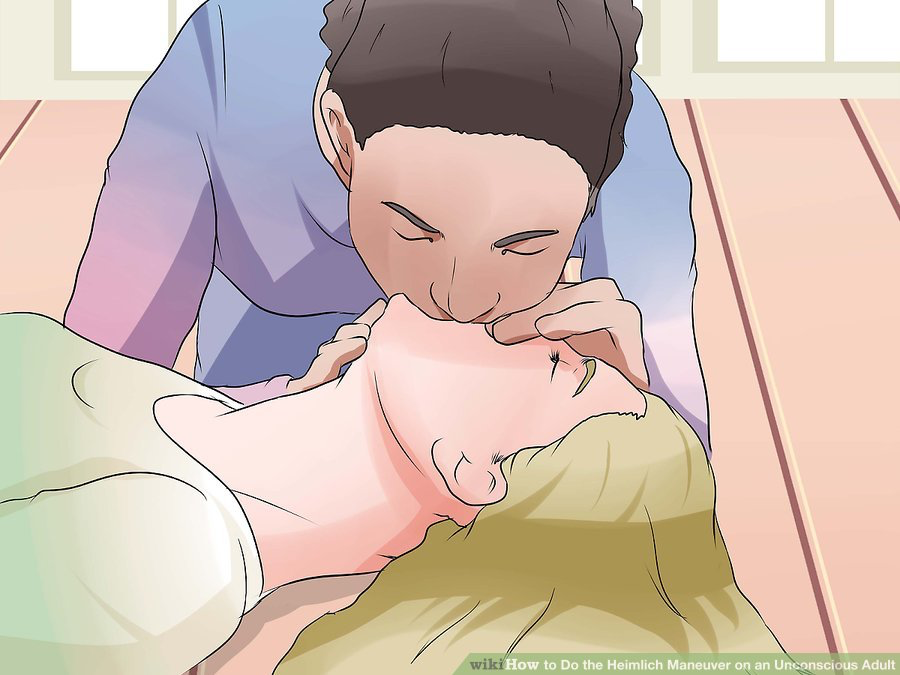
2. Begin breathing
Keeping a tight seal over the person's mouth, slowly give two breaths ('rescue breaths'). Pause between each breath. Watch for the victim's chest to rise.
- If the chest does not rise, reopen the airway, check your seal on his mouth/nose and breathe harder.
3. Reposition the head if the person does not begin breathing
Turn the head slightly or tilt it back slightly more, then again try giving two breaths with a pause between.
4. Start performing compressions
Begin chest compressions if the object is removed but the victim no longer has a pulse.
To perform chest compressions:
- Ensure that the person is lying flat on the floor on a hard surface.
- Place the heel of one of your hands on the person's breastbone, right between her nipples.
- Place the heel of your second hand on top of the first.
- Lean directly over your hands.
- Start performing compressions. Push down with your hands at least 2 inches into the person's chest, then let the chest rise completely. You will have to push hard and fast. Count out 30 quick chest compressions.
5. Stop and check to see if you can see the object causing the blockage
After 30 chest compressions, open the person's mouth again and look for a dislodged object. Pull it out if you can. Attempt a quick sweep again if no object is immediately seen.
- If you do not see the object, give two rescue breaths again, with a one second pause between each.
6. Continue the cycle until help arrives, if the person does not resume breathing
If the person's chest is still not rising and falling, keep repeating the cycle of 30 chest compressions, then two rescue breaths, until emergency medical assistance arrives.
- If another person is with you, switch off with him every two cycles. CPR is exhausting. Do not attempt to continue CPR if you are too tired. Improper CPR is not helpful to the patient.
_______________________________________________________________________________________________________________________
Are you a healthcare practitioner who enjoys patient education, interaction and communication?
If so, we invite you to criticise, contribute to or help improve our content. We find that many practicing doctors who regularly communicate with patients develop novel and often highly effective ways to convey complex medical information in a simplified, accurate and compassionate manner.
MedSquirrel is a shared knowledge, collective intelligence digital platform developed to share medical expertise between doctors and patients. We support collaboration, as opposed to competition, between all members of the healthcare profession and are striving towards the provision of peer reviewed, accurate and simplified medical information to patients. Please share your unique communication style, experience and insights with a wider audience of patients, as well as your colleagues, by contributing to our digital platform.
Your contribution will be credited to you and your name, practice and field of interest will be made visible to the world. (Contact us via the orange feed-back button on the right).
Disclaimer:
MedSquirrel is a shared knowledge, collective intelligence digital platform developed to share medical knowledge between doctors and patients. If you are a healthcare practitioner, we invite you to criticise, contribute or help improve our content. We support collaboration among all members of the healthcare profession since we strive for the provision of world-class, peer-reviewed, accurate and transparent medical information.
MedSquirrel should not be used for diagnosis, treatment or prescription. Always refer any questions about diagnosis, treatment or prescription to your Doctor.

